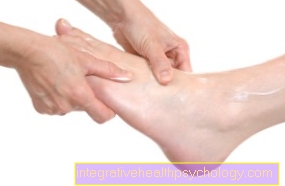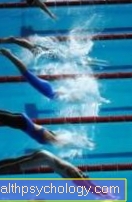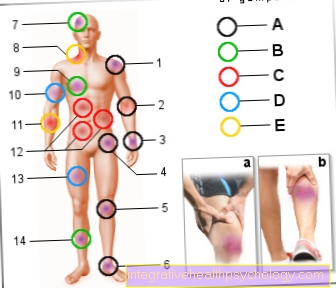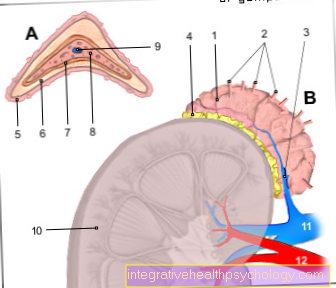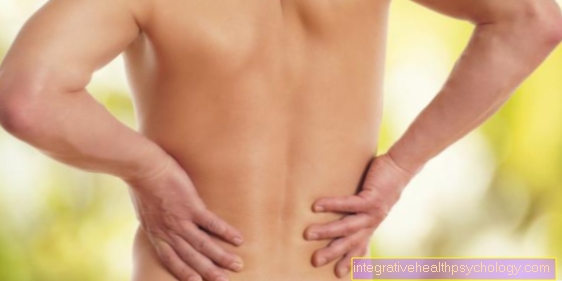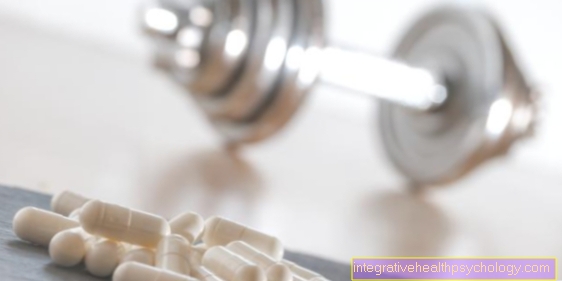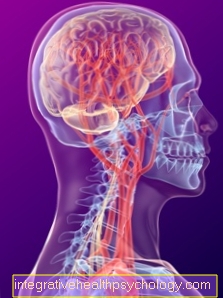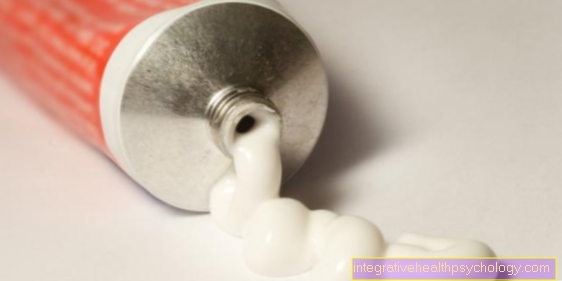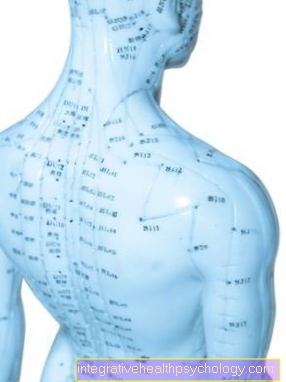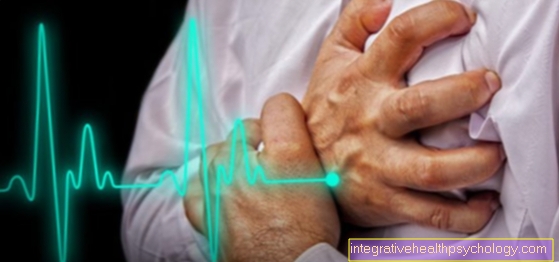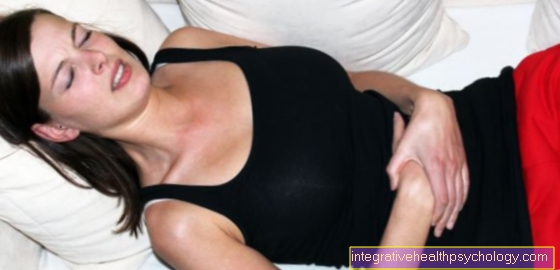External rotation
introduction
A rotation always describes a turning movement of a body part. This takes place around a so-called center of rotation, which is formed by the center of the joint. In the case of external rotation, the rotary movement is carried out outwards when viewed from the front. This is counteracted by the internal rotation, in which the rotary movement is directed inwards. External rotation can be performed by the joints of the extremities. This is possible in the shoulder joint, hip joint and ankle joint. There is no so-called rotational movement of hands and feet in this sense. It corresponds to the movement called pronation or supination.
In order to enable external rotation or internal rotation, the joint must be a ball or wheel joint.
Read more on the subject Forms of movement
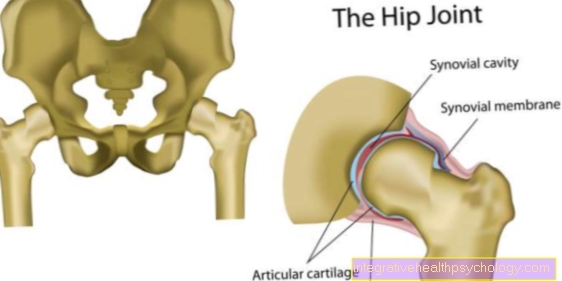
External rotation in the hip
The hip joint is a Ball joint and can therefore be moved in almost all directions.
The external rotation of the hip consists of an outward rotary movement of the femoral head in the acetabulum. This can be done, for example, when the knee is pulled towards the chest while lying on the back and turned outwards. Usually this is External rotation around 50 ° with the hip joint flexed 90 °, but only 30 ° with the hip extended (i.e. with the leg extended).
Many different Muscles are responsible for external rotation. These include the short and long thigh tighteners (Musculi adductores longus et brevis), the glutes (Glutei muscles), as well as other smaller muscles or muscle groups.
The rotational movement of the hip is at Go of great importance. Here there is an interplay of movements of the hip, knee and ankle. If one of these joints is not fully mobile, the other joints have to compensate for this loss of function and damage can result from the Improper loading come.
External rotation in the shoulder
An external rotation of the shoulder consists of an outward rotation of the humerus head in the joint socket. Of the outer part of the upper arm becomes so backwards turned. The interaction of different muscles enables this movement. As a rule, however, the shoulder joint performs a combination of rotations and movements around other axes.
The external rotation is normally around 60 °.
Both shoulder and back muscles are involved in the movement. Especially the so-called Supraspinatus muscles and infraspinatus, as well as the Deltoid muscle take on this task.
External rotation in the knee
The knee joint cannot be turned inwards or outwards when it is in the extended position. This is because the collateral ligaments of the joint are very tight and prevent this from happening. When the knee is bent (flexed), however, the collateral ligaments are slack and allow the knee joint to rotate. A External rotation is up to about 30 ° with the knee bent possible and is less inhibited by the cruciate ligaments than internal rotation.
With external rotation, the foot rotates outwards. The menisci also move with it. The only muscle that can trigger an external rotation in the knee joint is the so-called Biceps femoris muscle.
Movement in the ankle
The foot can be turned outwards, but there is no explicit name for this movement. Rather, it is one compound movement. The foot only has two axes of movement. A Flexion and extension is done by the upper ankle (OSG), whereas the so-called Pronation and supination movements of the lower ankle (USG) are. During pronation and supination, the foot is tilted, i.e. the outer or inner edge of the foot is moved towards the floor. External rotation of the foot is therefore one Combination movement from a pronation (the inner edge of the foot is moved towards the floor) and a flexion of the ankle.
The gait pattern with externally rotated feet can result from a misalignment of the hips.






.jpg)
